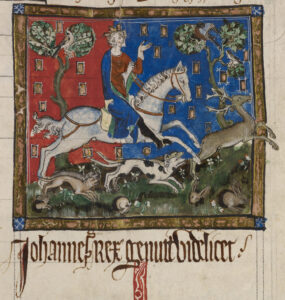Dowth is one of the three main tombs of the Brú na Bóinne World Heritage Site – a landscape of prehistoric monuments including the large passage-tombs at nearby Newgrange and Knowth.
Dowth, Knowth and Newgrange are actually all part of single ancient ritual landscape, rather than separate sites.
Unlike Newgrange and Knowth, Dowth has not been independently dated and has not undergone extensive restoration.
Dowth is less developed as a tourist attraction than Knowth and Newgrange, partly because the site has been damaged by centuries of looters, plundered by Vikings, and had stones taken by quarrying. Ill-advised archeological work in the 19th century included the Royal Irish Academy dynamiting the roof, causing a large still visible crater.
Dowth is set in a spectacular location on the highest point in the Boyne Valley. Newgrange, 2 kilometers distant, is visible from Dowth.
Dowth’s mound is approximately 15 meters high and 85 meters in diameter. It one of the largest and oldest megalithic structures in Ireland, larger than Newgrange.
http://www.carrowkeel.com/sites/boyne/dowth1.html
White quartz stones found around the base of the Dowth mound indicate it may once have had a bright white exterior wall like Newgrange.
Dowth was once surrounded by 115 kerbstones. Kerbstone 51, known as the Stone of the Seven Suns, features a number of radial circular carvings. A kerbstone with cup-marks and a spiral and a flower-like design, marks the entrance to Dowth South.
Three stone-lined passages lead into the mound. There are two passage tombs, known as Dowth North and Dowth South, and a souterrain. A third entrance on Dowth’s west side of is an early Christian souterrain that leads into the passage of Dowth North. It was built during the 10th or 11th century CE.
Like the other Boyne Valley passage tombs, Dowth has a rich mythological history.
According to one legend, Dowth is the burial place of the goddess Boann. Boann was said to have created the River Boyne.
Dowth was also believed to be the entrance to the Otherworld, a magical realm that was home to the Tuatha Dé Danann, mythical gods who lived in Ireland before humans.
In legendary lore, Dowth is called the Fairy Mound of Darkness, Dubhadh (‘darkening’), and The House of Darkness.
The medieval Dindsenchas (lore of places) says that king Bresal Bó-Díbad ordered the construction of a tower in a single day to reach heaven. Bersal’s sister cast a spell, making the sun stand still so that one day lasted indefinitely. Bresal then committed incest with his sister, breaking the spell, a legend similar to one associated with Newgrange.
With the spell broken, the sun sets and the builders leave. Hence the name Dubhadh (‘darkening’).
There may be a kernel of fact in the incest myth. Recent DNA analysis of human remains of a man at found Newgrange revealed he had parents who were most likely siblings.
These tales of light and darkness have been linked with solstice alignments at Brú na Bóinne.
Dowth’s tombs have winter solstice solar alignments like Newgrange.
Martin Brennan, author of The Stars and the Stones: Ancient Art and Astronomy in discovered the alignment during a ten-year study of the Boyne Valley.
From November to February light from the evening sun reaches into the Dowth South tomb passage and into the chamber. During the winter solstice, the sun light moves along the passage, into the circular chamber, where three stones are lit up by the sun.
https://www.knowth.com/dowth-sunsets.htm
Music:
Newgrange, RDScally & the Obstweedles, from the album Entropy: The Last Word In Everything
Available on Bandcamp
https://obstweedles.bandcamp.com/track/newgrange
ASCAP: QZ-6V5-16-00148 Published by Wounded Weasel Music Copyright 2019
Clouds Obscura, RDScally & the Obstweedles, from the album Entropy: The Last Word In Everything
Available on Bandcamp https://obstweedles.bandcamp.com/track/clouds-obscura
ASCAP: QZ-6V5-16-00156 Published by Wounded Weasel Music Copyright 2019
Entropy: The Last Word In Everything
https://obstweedles.bandcamp.com/album/entropy-the-last-word-in-everything
Published by Wounded Weasel Music Copyright 2019
#Dowth #ireland #irish #irishhistory #ancientireland #countymeath #passagetomb #archeology #irisharcheology #newgrange #knowth #ireland_travel #megalithic #kerbstone #runes


